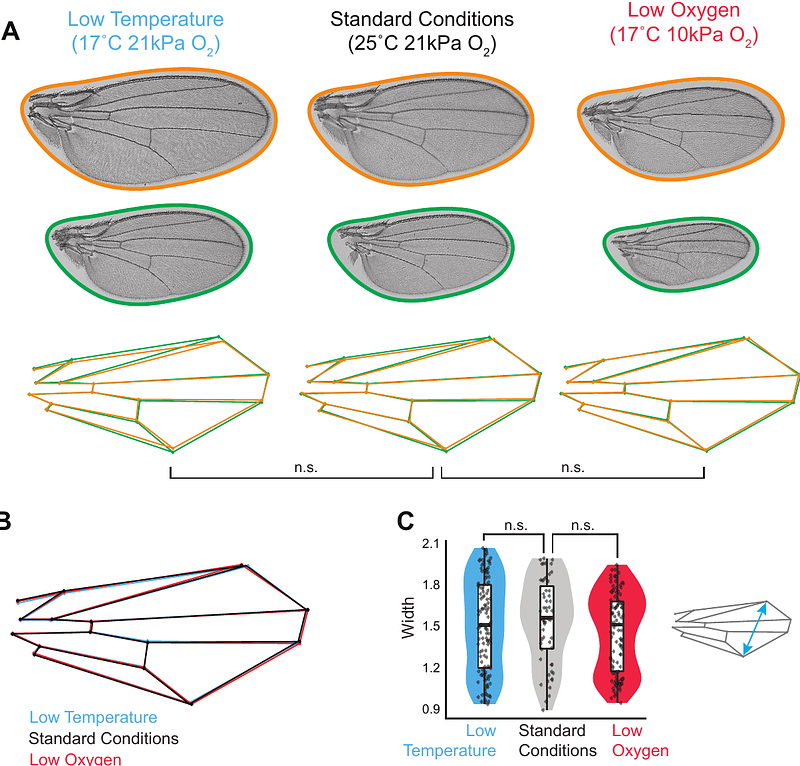Dpp Scaling is Not the Key to Robust Wing Patterning in Drosophila

Dpp Scaling is Not the Key to Robust Wing Patterning in Drosophila
Ghag, B. A.; Shingleton, A. W.
AbstractIndividuals within a population can vary dramatically in body and trait size in response to environmental factors such as developmental nutrition, temperature, and oxygen level, a phenomenon called phenotypic plasticity. Despite this variation, morphological pattern across the body and within traits are largely maintained, an example of developmental robustness. Consequently, the same trait can display both plastic and robust phenotypes. A fundamental yet unanswered question in developmental biology is: how do organs achieve plasticity in size while maintaining the robustness of pattern? This question is often answered using the French flag model of cell fate specification. The model argues that cells receive positional information from a gradient of signaling molecules (morphogens) that diffuse from a single location in undifferentiated tissue. Specifically, the model argues that if the gradient is dynamically scale invariant, such that the gradient adjusts proportionally to the size of the tissue as it grows, then pattern is maintained regardless of the tissue size. However, while dynamic scale invariance has been demonstrated in several systems, and explicitly or implicitly used to explain the robustness of pattern when tissue size varies due to environmental factors, this hypothesis has not yet been tested. We used the developing Drosophila wing as a model to test this hypothesis, under environmental conditions that reduce (low developmental oxygen level) and increase (low developmental temperature) adult wing size. We found that scale invariance of morphogen gradients is not observed under non-standard environmental conditions and is therefore not an explanation for robust patterning in the Drosophila wing with environmental variation in wing size.